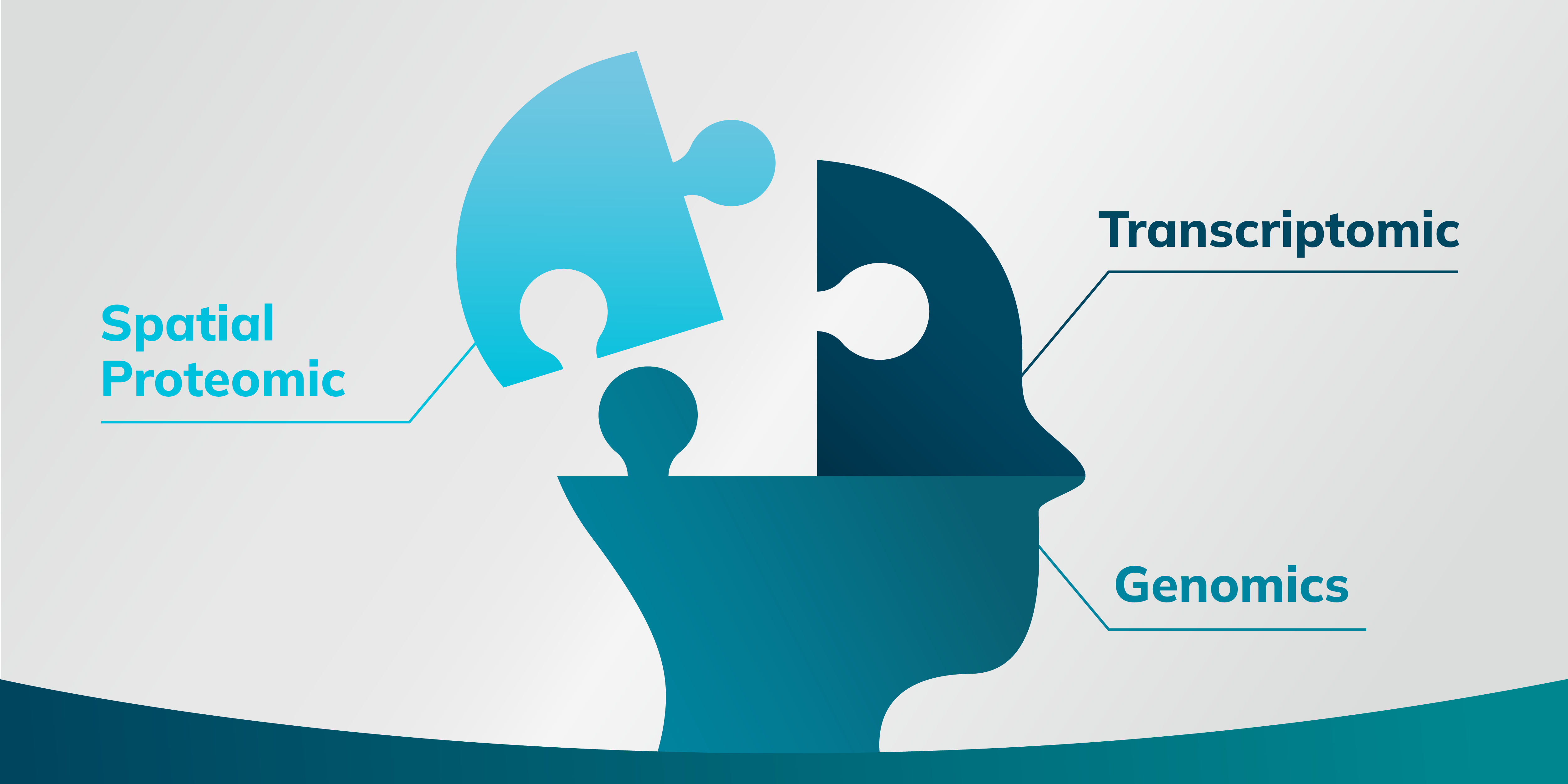

The life sciences are undergoing a shift driven by the integration of multi-omic technologies. Among these, spatial proteomic discovery stands out for its unique ability to provide precise insights into the protein composition of specific subcellular locales. By combining spatial proteomics with genomics and transcriptomics, researchers gain a comprehensive understanding of cellular function, effectively bridging the gap between genetic information and protein expression.
The Synergy of Omics Technologies
Genomics offers the complete blueprint of an organism's DNA, detailing potential gene functions and regulatory mechanisms. Transcriptomics captures the dynamic landscape of RNA transcripts, providing insights into gene expression patterns. However, these techniques don't reveal the functional protein players within the cell. Proteomics addresses this gap, revealing the entire complement of proteins, their modifications, and interactions. Spatial proteomics takes this a step further by pinpointing the exact locations of these proteins within tissues and cells, adding a crucial layer of spatial context for understanding complex biological systems.
Bridging RNA and Protein Worlds
Integrating spatial proteomics with genomics and transcriptomics offers a powerful approach to validate and extend findings across these domains. Here’s how this integration works:
Validation of Transcriptomic Data: Spatial proteomics can validate RNA expression data by confirming the presence and localization of the corresponding proteins. This is crucial because not all RNA transcripts translate into functional proteins, and spatial context can reveal regulatory mechanisms that influence protein expression.
Functional Insights: While genomics and transcriptomics provide a list of potential protein-coding genes and their expression levels, spatial proteomics identifies the actual proteins present in specific cellular compartments. This elucidates the functional implications of genetic variations and RNA expression changes.
Mapping Protein Networks: By pinpointing the exact locations of proteins and their interactions within the cellular environment, spatial proteomics helps map intricate protein networks. This complements transcriptomic data, which often predicts potential interactions based on co-expression patterns.
Case Studies and Applications
Spatial proteomics has been instrumental in Alzheimer's disease research, aiding in the identification of proteins associated with amyloid-beta aggregates in affected brain regions. By integrating this data with transcriptomic analyses, researchers can uncover how gene expression changes contribute to protein aggregation and disease progression. Similarly, in cancer research, spatial proteomics helps identify proteins involved in tumor microenvironments, aiding in the understanding of how genetic mutations and RNA expression changes drive cancer progression. This integrated approach facilitates the discovery of new therapeutic targets and biomarkers.
Conclusion
The collaboration across omics technologies represents a paradigm shift in biological research. Integrating spatial proteomic discovery with genomics and transcriptomics not only validates findings from RNA to protein levels but also enriches our understanding of cellular functions and disease mechanisms. Platforms like Microscoop™ are at the forefront of this integration, enabling researchers to explore the proteome with unprecedented spatial precision. As we continue to unravel the complexities of biological systems, the synergy of omics technologies will undoubtedly lead to more comprehensive and transformative discoveries.
| Info@syncell.com | |
| 617-631-2746 | |
|
|
200 Dexter Ave, Watertown, MA 02472, USA |
|
|
|